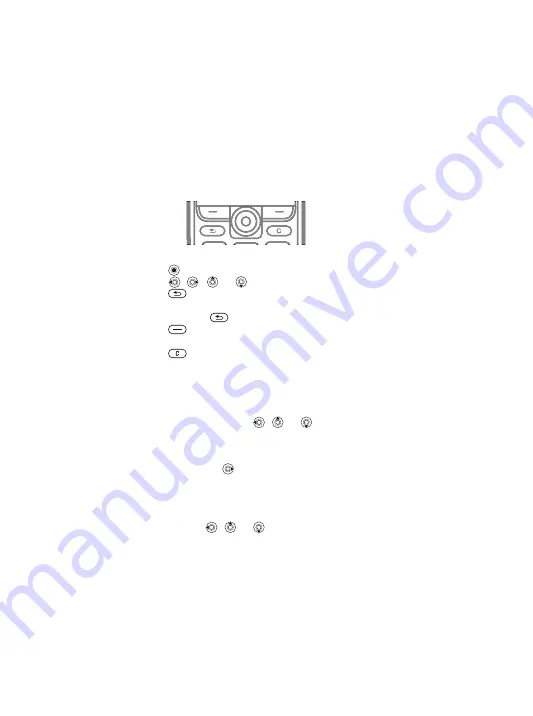
13
Navigating the menus
The main menus are shown as icons on the desktop. Some
submenus include tabs that appear on the screen.
• Press the navigation key in the centre or in a direction:
Press
to go to the desktop or to select items.
Press
,
,
or
to move through menus and tabs.
• Press
to go back one level in the menus or to end a
function or application.
Press and hold
to return to standby.
• Press
to select the options shown immediately above
these keys on the screen.
• Press
to delete items.
• Scroll to a menu item
}
to get help on selected
features.
•
}
to enter a list of options.
Shortcuts
From standby, you can use
,
or
to go directly to a
function.
To create a standby shortcut
1
If, for example,
has no predefined shortcut
}
.
2
Scroll to a function to create a shortcut to
}
To edit a standby shortcut
1
}
}
}
and select an existing
shortcut for
,
or
that you want to edit
}
2
Scroll to and select a function
}
.
This is the Internet version of the user's guide. © Print only for private use.
Contents
1
Contents
Getting to know your phone 4
Key functions, quick keys, entering letters and characters.
Personalizing your phone 22
Download settings or choose from the phone.
Calling 31
Use the Phonebook, voice control, call options.
Messaging 51
Multimedia messaging, chat and e-mail.
Camera 60
Use the camera.
Setting up WAP and e-mail 63
All you need to know about setting up WAP and e-mail.
Using WAP 71
WAP browser, bookmarks.
Transferring and exchanging information 74
Bluetooth
wireless technology, synchronization.
More features 79
Calendar, alarm clock, stopwatch, timer, games.
Security 87
SIM card lock, phone lock.
Troubleshooting 89
Why doesn’t the phone work the way I want?
Additional information 91
Safe and efficient use, warranty, declaration of conformity.
Icons 98
What do the icons mean?
Index 105
Sony Ericsson T618





























